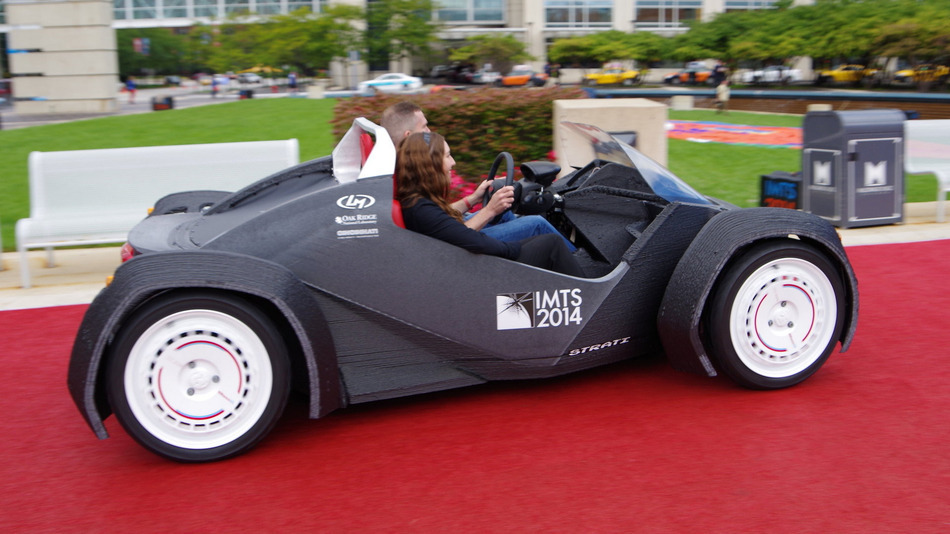Back in 2013, CADagency reported on a chap called Ivan Sentch who was working on 3D printing his very own Aston Martin DB4. Now, though, the idea of mass producing a 3D printed car has been taken on by Arizona-based Local Motors.
Local developed and produced a compact two-seater called the Strati back in 2014, 3D printing its 49 parts in around 44 hours, then assembling it. By comparison, most cars are made up of 5-6000 parts. From there, though, the company held a contest to find a design to be the basis of a mass market, 3D printed car, with well-known petrolhead and Tonight Show host Jay Leno among the panel of judges. The winner was 39-year-old engineer Kevin Lo.

Lo’s car was picked for several reasons. First, it’s body is multi-panel and modular in design. The Strati, using a single piece body, may be elegantly simple but in the event of any kind of fender-bender, the whole body would have to be replaced. While the 3D printed build process might make that feasible, it’s always going to be cheaper and easier to have a body made up of several panels so only those that incur damage require repair or replacement. It also means that the basic car – chassis, powertrain, running gear – can remain the same while the bodywork can be altered accommodate different tastes. Some customers may prefer a futuristic, cutting-edge appearance while others may want a sleeker, more classic style. Customers may even simply change the style of their car if they feel like it.
Second, Lo’s design is able to incorporate off the shelf parts, such as the lights, instruments, seats, and so on, to enable a faster printing and assembly schedule. The rear lights, for example, come from a Mazda.
And third, this design made the judges sit up and go, ‘What’s that?’ which was also part of the mandate.

Initially, Local expects their new model to be completed as a ‘low-speed neighbourhood car’ and the first examples to be on sale in late 2016, costing between $18,000 and $30,000, with the world’s first highway-ready, 3D printed vehicles to be on the market sometime in 2017.
As for the LM3D, the staff at Local Motors are justifiably very proud that they are ‘making history’ as they put it with the world’s first widely available 3D printed car, and offer to answer some FAQs on the company’s website:
How much of the LM3D is 3D printed?
Roughly 75% of the LM3D is printed. Our goal is to consolidate as much of the traditional bill of materials into a single, 3D-printed piece as possible, eventually making about 90% of the car using 3D-printing. Nearly all of the body panels and chassis are 3D printed on the LM3D.
What type of materials are you working with?
We are continually testing new types of materials and different blends for additive manufacturing. As of now, we’re using a blend of 80 percent ABS plastic and 20 percent carbon fibre.
How long does it take to print and assemble?
The design was chosen on July 7th, and the build was completed on September 18th. Taking just over two months from design to prototype, Local Motors built a 3D-printed car at unprecedented speed.
How safe is a 3D printed car?
The LM3D was built with a focus on further optimizing the construction methodology of Direct Digital Manufacturing. With the LM3D series, early tests show promise that all crash testing will be complete by the end of 2016 including all certifications needed to get 3D-printed cars on the road. In fact, our goal is to make 3D-printed cars safer than traditionally manufactured cars.
Currently, 3D printing is still an underused process in the automotive industry, but everyone involved with Local Motors and the LM3D seems to think times are going to change. Especially Kevin Lo, who says, ‘I like to think in 10 years, everyone is going to be driving a car with 3D printing in it.’

